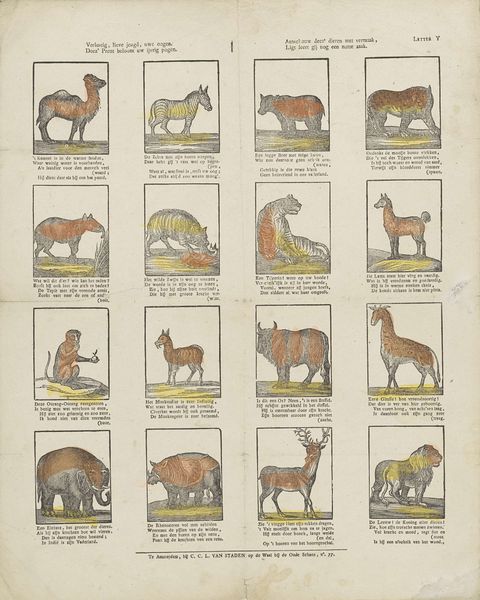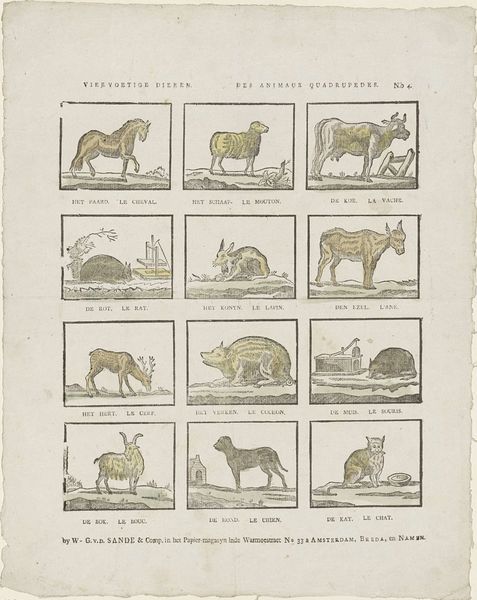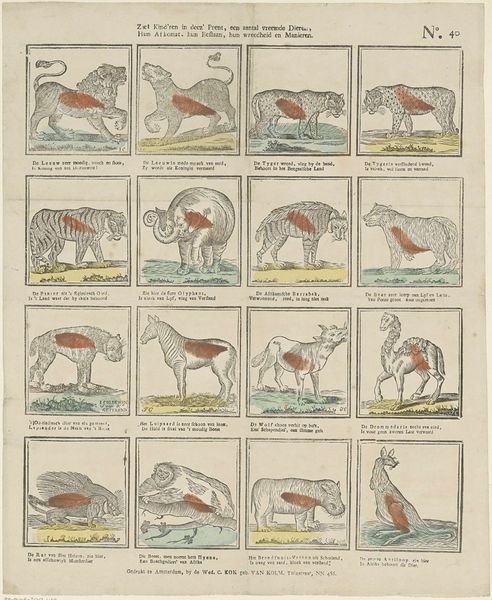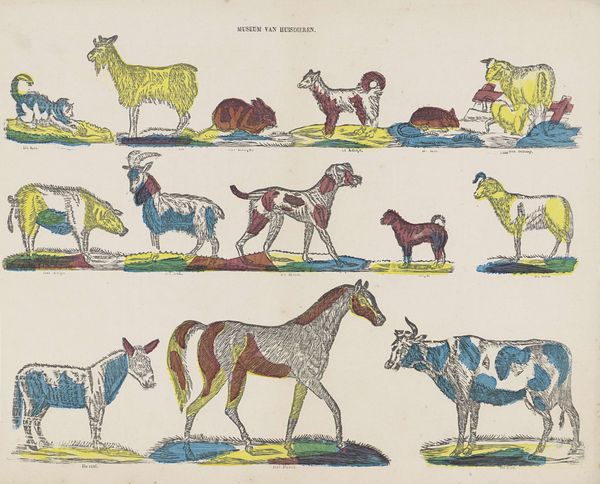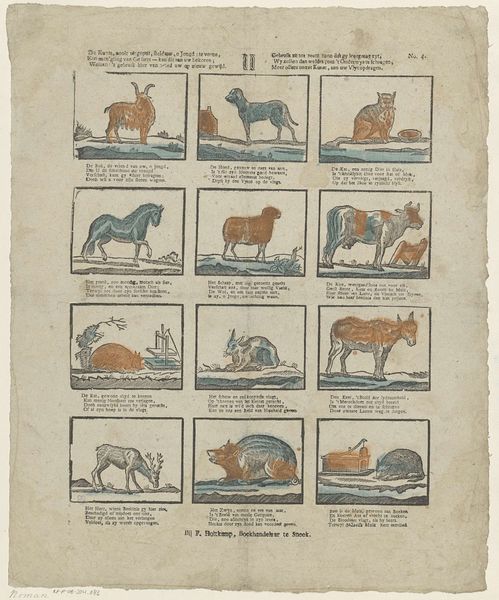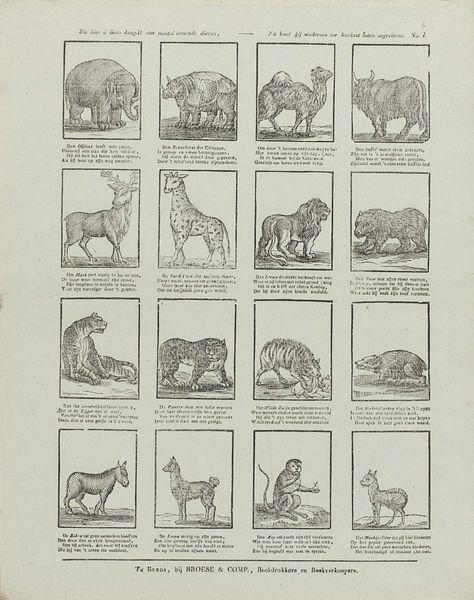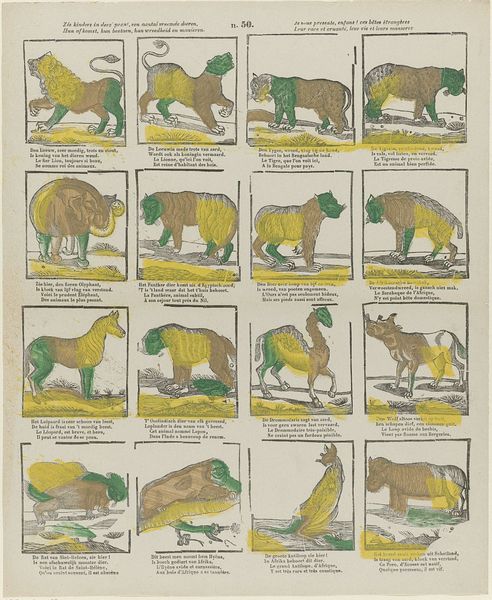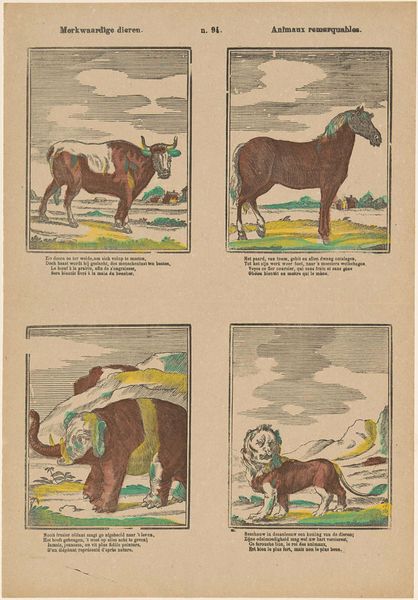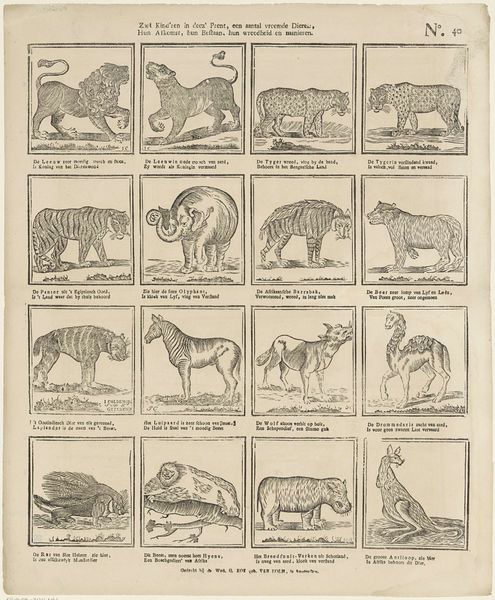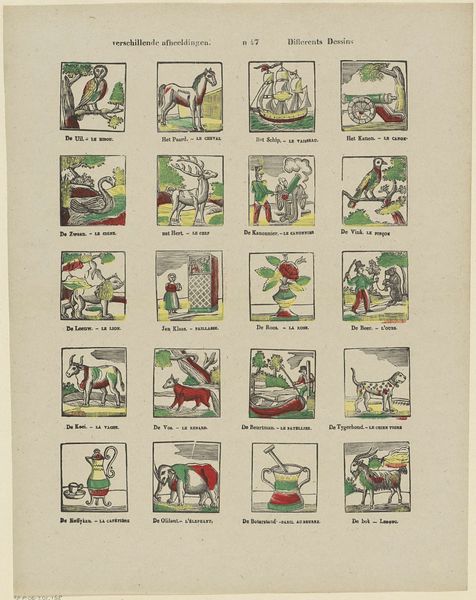
drawing, lithograph, print, etching, ink
#
drawing
#
comic strip sketch
#
lithograph
# print
#
pen illustration
#
etching
#
figuration
#
personal sketchbook
#
ink
#
sketchwork
#
ink drawing experimentation
#
pen-ink sketch
#
line
#
pen work
#
sketchbook drawing
#
storyboard and sketchbook work
#
sketchbook art
#
realism
Dimensions: height 422 mm, width 315 mm
Copyright: Rijks Museum: Open Domain
Curator: Here we have "Verschillende dieren / Différents animaux," a print by Franciscus Antonius Beersmans, likely created between 1866 and 1902. It's a lithograph featuring several animals in a grid. Editor: It strikes me as charmingly naive, almost dreamlike. The animals are familiar yet slightly off-kilter in their presentation and color. Curator: Precisely. Note the stark, clear lines and the flat application of color. Beersmans is less concerned with representing these creatures realistically and more focused on a graphic, almost diagrammatic approach. We might consider how the use of line dictates form. Editor: Absolutely. The categorization—the gridded presentation—reminds me of early attempts to codify the natural world, reflecting colonial desires to catalogue and control. What's the significance, though, of the limited, somewhat arbitrary use of color? Curator: The colors appear to emphasize certain planes of the animals, disrupting the natural forms in interesting ways. We see how a green "saddle" has been added on to one of the animals as if it's simply the pattern to add onto it like the pattern of a suit. This invites reflection upon their inherent construction as signs, as concepts. Editor: That deconstruction by partial coloring is a powerful point, given this work emerged during an intense period of species identification amid expanding European colonial reach. It calls into question not just representation, but the ethics of taxonomies imposed upon a diverse global ecosystem. Curator: And there is also something that is subtly being addressed about the arbitrary quality of categorization itself: where do we place our distinctions? Editor: The work highlights the problematic history of objectifying nature—both as resources to be exploited and as subjects to be scientifically "understood" within biased frameworks. These images feel almost like an instruction manual to dominate. Curator: I see the subversion of naturalistic forms by this particular kind of linear ordering creating this diagrammatic effect. Editor: Ultimately, it provides fodder for interrogating power. Curator: Indeed. It seems both artistically straightforward, but theoretically complex. Editor: It reminds me to be mindful of the political implications embedded in seemingly innocent images of the natural world.
Comments
No comments
Be the first to comment and join the conversation on the ultimate creative platform.

